Papers by Samat Samashev
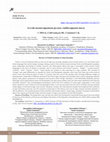
Қазақстан археологиясы № 3 (25) , 2024
There is a lot of historical data on the use of signs by nomadic peoples since ancient times. It ... more There is a lot of historical data on the use of signs by nomadic peoples since ancient times. It is not known from what language the words tamga, tamaga, damga, used in the ordinary sense among Turkic and Mongolian peoples, were originated. According to written sources, the information about the sign is recorded in the ancient Turkic language in the form of tamya or tamyačī, and in some Persian and Turkish sources - "belgü", " tuyray (tuyra)", "mühür", "mor", "tamya", "tavro", "nişan"words are written in the meaning of a sign, symbol. The concept of "tamga" was used differently or equally by Turkic and Mongolian peoples, who have had close ties since ancient times. From the historical point of view it is known that the use of the symbol went through different stages of development. Especially in different periods of the Stone Age, the signs and symbols were used to designate specific places, holy places, possession of weapons and various other things. However, in the Paleolithic-Neolithic period, although social organizations were not developed, the signs were widely used, but their exact definition still requires scientific research. The archaeological excavations show that the tradition of using signs originated in very early times. Based on such historical and archaeological data, it can be assumed that the use of symbols among nomadic tribes began in the Bronze Age, even earlier. However, to date, the international studies have explored the traditions of sign formation and use, but the research conducted on the history and use of signs among nomadic peoples is still insufficient. This article presents brief scientific information about "tanba (sign, symbol)" and gives information about the meaning of Kazakh tribes and the system of signs and symbols of the Altai Kazakhs.
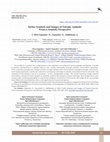
Kazakhstan Archeology, 2024
The tamga, as a symbol, has a long history in the traditions and cultures of various peoples worl... more The tamga, as a symbol, has a long history in the traditions and cultures of various peoples worldwide. It served to denote membership in a specific tribe or clan, convey information through symbols, and confirm ownership. From a semiotic perspective, tamgas function as sign systems that communicate messages through visual forms. Each tamga represents a particular cultural or social group and helps to identify ownership of land or livestock. The simplicity of the tamga is due to its purpose – to be a recognizable symbol.
This article examines tamga symbols and totemic animals of Turkic peoples as symbolic systems that express cultural meanings. Each tamga has its own unique code, indicating belonging to a particular lineage or community. In this sense, the tamga serves as a symbol that reflects the social identity, status, and significance of a particular group.
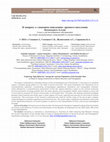
Kazakhstan Archeology, 2024
This paper is dedicated to a detailed analysis of the archaeological site of Shozhe No. 5, focusi... more This paper is dedicated to a detailed analysis of the archaeological site of Shozhe No. 5, focusing on its symbolic system, including zigzag patterns on the walls of burial structures. The study emphasizes the importance of an interdisciplinary approach, incorporating archaeological, geophysical, laboratory, and iconographic methods, which allowed for a comprehensive examination of the site. Special attention is given to the cultural continuity and the association of zigzag symbols with the water element and cosmogonic beliefs, which played a crucial role in the funerary practices of ancient communities in the Kazakh Altai. The paper also explores potential analogies between these symbols and similar signs in other regions of Eurasia, opening new avenues for the study of cultural connections. The conclusions of the research underscore the need for further study of the site to gain a deeper understanding of its symbolic significance and historical role. This study makes a significant contribution to the study of the significative behavior of ancient peoples, as well as to the interpretation of their cultural and mythological heritage.
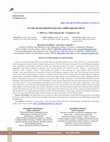
Kazakhstan Archeology, 2024
There is a lot of historical data on the use of signs by nomadic peoples since ancient times. It ... more There is a lot of historical data on the use of signs by nomadic peoples since ancient times. It is not known from what language the words tamga, tamaga, damga, used in the ordinary sense among Turkic and Mongolian peoples, were originated. According to written sources, the information about the sign is recorded in the ancient Turkic language in the form of tamγa or tamγačï, and in some Persian and Turkish sources - “belgü”, “ tuγraγ (tuγra)”, “mühür”, “mör”, “tamγa”, “tavro”, “nişan”words are written in the meaning of a sign, symbol. The concept of “tamga” was used differently or equally by Turkic and Mongolian peoples, who have had close ties since ancient times. From the historical point of view it is known that the use of the symbol went through different stages of development. Especially in different periods of the Stone Age, the signs and symbols were used to designate specific places, holy places, possession of weapons and various other things. However, in the Paleolithic-Neolithic period, although social organizations were not developed, the signs were widely used, but their exact definition still requires scientific research. The archaeological excavations show that the tradition of using signs originated in very early times. Based on such historical and archaeological data, it can be assumed that the use of symbols among nomadic tribes began in the Bronze Age, even earlier. However, to date, the international studies have explored the traditions of sign formation and use, but the research conducted on the history and use of signs among nomadic peoples is still insufficient. This article presents brief scientific information about “tanba (sign, symbol)” and gives information about the meaning of Kazakh tribes and the system of signs and symbols of the Altai Kazakhs.

Povolzhskaya Arkheologiya (The Volga River Region Archaeology), 2020
The article considers the functional purpose of signs resembling tamgas of the Kazakh medieval no... more The article considers the functional purpose of signs resembling tamgas of the Kazakh medieval nomads. Today, scientists from Kazakhstan and foreign scientists are studying the system of tamga formation by people inhabiting Kazakh steppes since the ancient times. Year by year scientists reveal new movable and immovable monuments with images of tamgas belonging to the different periods of history. Among them the most distinguishing ones are the tamgas of the Middle Ages. During the Middle Ages complex ethno-political and socio-cultural processes took place there – Western Turkic, Turgesh, Karluk, Oguz and Kimak khanates as well as state formations of the naimans, karakhans, kereits, zhalayyrs and kipshaks were founded and disintegrated. It is known that the nomadic ethnic groups of the Middle Ages had independent tamgas, both tribal and derived from them, as well as family and personal, which showed their status in society, the right to property, etc. Tamgas were used to mark weapon,...
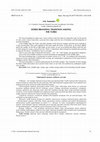
Journal of history, 2021
The horse branding has deep roots. Some scholars refer the origin of tamga-like signs to the peri... more The horse branding has deep roots. Some scholars refer the origin of tamga-like signs to the period of сlan system. Some researchers associate their origin with the era of formation and development of pastoral nomadism. In the Middle Ages the Turkic and other peoples of the Eurasian steppes used the horse marking as a sign of ownership. They were applied on the neck under the mane, on the hoof, on the back slightly above the saddle, on the left or right thigh, on the cheek, in rare cases behind the elbow (with the aim to hide tamga) by using a special hot-iron. There is information about temporary branding (by painting or haircuts) for horses, intended for sale or exchange. There is one more sign of distinction for horses-"en". "En " and "tamga" are equivalent categories. One of the most reliable evidences of horse branding are petroglyphs of the Middle Ages. The horse branding topic is mentioned in written sources of 5 th c. BC. According to the researchers, tamgas on horses among the medieval rock carvings are comparable in appearance to the signs found in Mongolia and the Altai Mountains. The horse branding is a common phenomenon for all Turkic peoples. The continuity of some tamgas has been under observation since ancient Turkic times. In our time, this tradition has undergone significant changes.
BULLETIN of the L N Gumilyov Eurasian National University Historical sciences Philosophy Religion Series, 2020
Л.Н. Гумилев атындағы Еуразия ұлттық университетінің хабаршысы. Тарихи ғылымдар. Философия. Дінта... more Л.Н. Гумилев атындағы Еуразия ұлттық университетінің хабаршысы. Тарихи ғылымдар. Философия. Дінтану сериясы, №4(133)/2020 BULLETIN of the L.N. Gumilyov Eurasian National University. Historical Sciences. Philosophy. Religion Series, 4(133)/2020 Вестник Евразийского национального университета имени Л.Н. Гумилева. Серия Исторические науки. Философия. Религиоведение, №4(133)/2020 МАЗМҰНЫ/CONTENT/СОДЕРЖАНИЕ
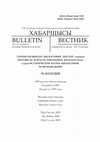
BULLETIN of L.N. Gumilyov Eurasian National University, 2020
The Oghuz, whose history of emergence and development lies in the period of the VIII–XIII
centuri... more The Oghuz, whose history of emergence and development lies in the period of the VIII–XIII
centuries, played a significant role in the formation of modern Turkic peoples. The Oghuz tribes consisted of 24
families. They started the process of Turkization of the peoples of the medieval Eurasian steppes. The evidence
of it is the similarity of Oghuz tamgas found on the territory of Zhetysu, Syr Darya and Western Kazakhstan
with tamgas of other Turkic-speaking peoples.
Today Oghuz tamgas attract the attention of many domestic and foreign researchers, but scientists are only
interested in genealogical and cultural aspects so far. In case tamgas are perceived as a full-fledged source, some
problems related to the studies of the medieval history of the Great belt of steppes can be solved, for example,
such as clarifying the geography of distribution of the Oghuz tribes, analyzing their political and economic
activity, as well as determining the degree of kinship of the Turkic peoples among themselves.
The article considers the pronounced differences and similarities of Oghuz tamgas in different written
sources, the synchronicity of the existence of tamgas in the Turkic world, and how well the problem is studied. The results of preliminary research indicate the presence and preservation (based on the monuments) of
Oghuz tamgas among Kazakhs, Turks, Azerbaijanis, Kirghiz, Tatars, Turkmens, Nogais, Bashkirs. This, in turn,
indicates the existence of Turkic unity in the researched territories during the periods of the proliferation of
Oghuz tamgas.

The article considers the functional purpose of signs resembling tamgas of the Kazakh medieval no... more The article considers the functional purpose of signs resembling tamgas of the Kazakh medieval nomads. Today, scientists from Kazakhstan and foreign scientists are studying the system of tamga formation by people inhabiting Kazakh steppes since the ancient times. Year by year scientists reveal new movable and immovable monuments with images of tamgas belonging to the different periods of history. Among them the most distinguishing ones are the tamgas of the Middle Ages. During the Middle Ages complex ethno-political and socio-cultural processes took place there – Western Turkic, Turgesh, Karluk, Oguz and Kimak khanates as well as state formations of the naimans, karakhans, kereits, zhalayyrs and kipshaks were founded and disintegrated. It is known that the nomadic ethnic groups of the Middle Ages had independent tamgas, both tribal and derived from them, as well as family and personal, which showed their status in society, the right to property, etc. Tamgas were used to mark weapon, coins and items of household and clothing. Almost all objects were marked with tamgas, tamga practically was used a tool of management, i.e. it was a sign of statehood, ancestral affiliation, private property, and was also used as a memorial text, a talisman and, perhaps, "to give an individual a special status". Tamgas are said to be an ancient prototype of modern legal acts regulating public relations.

ПОВОЛЖСКАЯ АРХЕОЛОГИЯ, 2020
The article considers the functional purpose of signs resembling tamgas of the Kazakh medieval no... more The article considers the functional purpose of signs resembling tamgas of the Kazakh medieval nomads. Today, scientists from Kazakhstan and foreign scientists are studying the system of tamga formation by people inhabiting Kazakh steppes since the ancient times.
Year by year scientists reveal new movable and immovable monuments with images of tamgas belonging to the different periods of history. Among them the most distinguishing ones are the tamgas of the Middle Ages. During the Middle Ages complex ethno-political and socio-cultural processes took place there – Western Turkic, Turgesh, Karluk, Oguz and Kimak khanates as well as state formations of the naimans, karakhans, kereits, zhalayyrs and kipshaks were founded and disintegrated. It is known that the nomadic ethnic groups of the Middle Ages had independent tamgas, both tribal and derived from them, as well as family and ersonal, which showed their status in society, the right to property, etc. Tamgas were used to mark weapon, coins and items of household and clothing. Almost all objects were marked with tamgas, tamga practically was used a tool of management, i.e. it was a sign of statehood, ancestral affi liation, private property, and was also used as a memorial text, a talisman and, perhaps, "to give an individual a special status". Tamgas are said to be an ancient prototype of modern legal acts regulating public relations.
АЛТАЙ – ТҮРКІ ӘЛЕМІНІҢ АЛТЫН БЕСІГІ, 2019
Мақалада Қазақ Алтайындағы түркі таңбаларын зерттеудің өзекті мәселелері қарастырылады

ҚАЗАҚCТАНДАҒЫ ОРТАҒАСЫРЛЫҚ ТАҢБАЛАРДЫҢ ЭТНОӘЛЕУМЕТТІК-МӘДЕНИ МАҢЫЗЫ, 2019
Tamgas and signs resembling tamgas of medieval Kazakhstan, where complex ethnopolitical processes... more Tamgas and signs resembling tamgas of medieval Kazakhstan, where complex ethnopolitical processes took place, such as the establishment and disintegration of numerous states and tribal unions, draw scholars’ attention. Tamgas, acting as a marker of the ethnic culture of the medieval peoples of Kazakhstan, carried a lot of functional meanings. They were used as a means of communication for a certain ethnosocial and cultural environment, including non-verbal communication. Tamgas communicated a certain intellectual meaning . New researches in this direction are mainly carried out in order to approve or reject hypotheses and comparisons functioning in science, and at the same time no intermediate set of the results gathered to compile a holistic picture is available.
The works of modern researchers studying several periods of tamgas are analyzed in the article: Old Turkic, Turgesh, Oguz, Karluk, and Early Karakhanid.
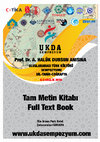
TÜRK DÜNYASINDAKİ DAMGALARDA ORTAK ÖZELLİKLER, 2019
Medieval nomads, the founders of a vast state on the great belt of the steppe and participants of... more Medieval nomads, the founders of a vast state on the great belt of the steppe and participants of the process of Kazakh ethnogenesis and other modern Turkic-speaking people, left a big system of signs and tamgas. According to modern archaeological and ethnographic field studies, tamgas are revealed in the Turkic people’s habitats, they are shown on rocks, religious and memorial objects, wells, ceramic vessels, coins, weapons, etc. Some people still use tamgas in their economic and cultural activities.
The ancient Turkic tribes used their own national tamgas later transforming them into dynastic, family and personal. Tamgas were used for administrative activities in external politics and other state affairs. Usage of tamgas provided strict discipline and served as an effective tool of law and order. Tamgas also depicted the status of society members.
En was used for marking small domestic animals. Grown-up sons after marriage moved out from their parents and received their part of cattle, which was named enshi. As these animals had already had tamgas, en was used for distinguishing them.
Every scientist studying tamgas, sooner or later has to deal with the question of the parallelism of them in Turkic world. If to consider Turkic tamgas as a huge puzzle, this scientific problem cannot be solved until all the parts are collected. In this regard, the aim of the paper is to discuss the issues of complex research of Turkic tamgas in the Turkic scientific community.
The purpose of the current study is to define the boundaries of distribution of Turkic tamgas, identify their functions and reveal semantic load. In this study, a comparative analysis of the tamgas which are a part of the cultural heritage and common values of the Turkic people has been made. The obtained results are aimed to contribute to the field.
Traditional Marking Systems A Preliminary Survey Edited by, 2010
«Жaңa мaтериaлдaр және aрхеологиялық зерттеу әдістемесі» aтты тaқырыптa С.М. Ақынжaновтың туғaнынa 80 жыл толуынa орaй «Археология: ӛткені, бҥгіні, болaшaғы» Бірінші хaлықaрaлық жaс ғaлымдaрдың ғылыми-әдістемелік конференция мaтериaлдaры, 2019
Мақалада түркі халықтарындағы малға "ен салу" дәстүрі қарастырылған
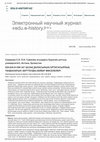
Электронный научный журнал «edu.e-history.kz», 2018
From the ancient timestamgas and signs have been indispensable attributes of property and power.
... more From the ancient timestamgas and signs have been indispensable attributes of property and power.
Symbols and signs, or in other words, “tamgas” got their highest significance in medieval states, which included numerous tribal structures and ethno-political associations. Tamgas were used in carrying out administrative, managerial, foreign policy and other state functions. It is known that the nomadic ethnic groups of the Middle Ages had independent tamgas, both tribal and derived from them, as well as family and personal, which showed their status in society, the right to property, etc. Subsequently, these tribes were involved in the ethnogenesis of the Kazakh people (and all Turkic-speaking peoples), thus our people inherited a big system of symbols and signs that contain great amount of information that requires a clue along with a vast territory and rich language.
Due to modern field studies, medieval tamgas were found on the surface of some cult-memorial objects, on rocks, on coins, weapons, everyday objects, etc. Today much data has been accumulated on the tamgas of the medieval peoples of Kazakhstan. This, in turn, necessitates their comprehensive study in a single research work.
Conference Presentations by Samat Samashev
В мае – августе 2019 года экспедицией продолжены широкомасштабные и комплексные работы на памятни... more В мае – августе 2019 года экспедицией продолжены широкомасштабные и комплексные работы на памятнике Елеке сазы (расположенного в горах Тарбагатая, на высоте от 1442 до 1550 м над уровнем моря), по теме: «Алтай - Тарбагатай от эпохи бронзы до средневековья» в рамках реализации задач второго этапа «Программы развития научно-исследовательских работ в сфере археологии в ВКО на 2019-2021 годы» Акимата Восточно-Казахстанской области Республики Казахстан (руководитель программы Д. К. Ахметов, темы – Самашев З.).
Кроме археологических раскопок разновременных и разнотипных памятников археологии, проводились мероприятия по изучению и консервации элементов ряда погребально-поминальных объектов Елеке сазы для последующей их музеефикации.









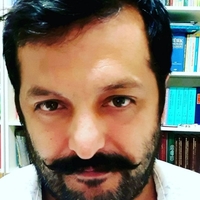

Uploads
Papers by Samat Samashev
This article examines tamga symbols and totemic animals of Turkic peoples as symbolic systems that express cultural meanings. Each tamga has its own unique code, indicating belonging to a particular lineage or community. In this sense, the tamga serves as a symbol that reflects the social identity, status, and significance of a particular group.
centuries, played a significant role in the formation of modern Turkic peoples. The Oghuz tribes consisted of 24
families. They started the process of Turkization of the peoples of the medieval Eurasian steppes. The evidence
of it is the similarity of Oghuz tamgas found on the territory of Zhetysu, Syr Darya and Western Kazakhstan
with tamgas of other Turkic-speaking peoples.
Today Oghuz tamgas attract the attention of many domestic and foreign researchers, but scientists are only
interested in genealogical and cultural aspects so far. In case tamgas are perceived as a full-fledged source, some
problems related to the studies of the medieval history of the Great belt of steppes can be solved, for example,
such as clarifying the geography of distribution of the Oghuz tribes, analyzing their political and economic
activity, as well as determining the degree of kinship of the Turkic peoples among themselves.
The article considers the pronounced differences and similarities of Oghuz tamgas in different written
sources, the synchronicity of the existence of tamgas in the Turkic world, and how well the problem is studied. The results of preliminary research indicate the presence and preservation (based on the monuments) of
Oghuz tamgas among Kazakhs, Turks, Azerbaijanis, Kirghiz, Tatars, Turkmens, Nogais, Bashkirs. This, in turn,
indicates the existence of Turkic unity in the researched territories during the periods of the proliferation of
Oghuz tamgas.
Year by year scientists reveal new movable and immovable monuments with images of tamgas belonging to the different periods of history. Among them the most distinguishing ones are the tamgas of the Middle Ages. During the Middle Ages complex ethno-political and socio-cultural processes took place there – Western Turkic, Turgesh, Karluk, Oguz and Kimak khanates as well as state formations of the naimans, karakhans, kereits, zhalayyrs and kipshaks were founded and disintegrated. It is known that the nomadic ethnic groups of the Middle Ages had independent tamgas, both tribal and derived from them, as well as family and ersonal, which showed their status in society, the right to property, etc. Tamgas were used to mark weapon, coins and items of household and clothing. Almost all objects were marked with tamgas, tamga practically was used a tool of management, i.e. it was a sign of statehood, ancestral affi liation, private property, and was also used as a memorial text, a talisman and, perhaps, "to give an individual a special status". Tamgas are said to be an ancient prototype of modern legal acts regulating public relations.
The works of modern researchers studying several periods of tamgas are analyzed in the article: Old Turkic, Turgesh, Oguz, Karluk, and Early Karakhanid.
The ancient Turkic tribes used their own national tamgas later transforming them into dynastic, family and personal. Tamgas were used for administrative activities in external politics and other state affairs. Usage of tamgas provided strict discipline and served as an effective tool of law and order. Tamgas also depicted the status of society members.
En was used for marking small domestic animals. Grown-up sons after marriage moved out from their parents and received their part of cattle, which was named enshi. As these animals had already had tamgas, en was used for distinguishing them.
Every scientist studying tamgas, sooner or later has to deal with the question of the parallelism of them in Turkic world. If to consider Turkic tamgas as a huge puzzle, this scientific problem cannot be solved until all the parts are collected. In this regard, the aim of the paper is to discuss the issues of complex research of Turkic tamgas in the Turkic scientific community.
The purpose of the current study is to define the boundaries of distribution of Turkic tamgas, identify their functions and reveal semantic load. In this study, a comparative analysis of the tamgas which are a part of the cultural heritage and common values of the Turkic people has been made. The obtained results are aimed to contribute to the field.
Symbols and signs, or in other words, “tamgas” got their highest significance in medieval states, which included numerous tribal structures and ethno-political associations. Tamgas were used in carrying out administrative, managerial, foreign policy and other state functions. It is known that the nomadic ethnic groups of the Middle Ages had independent tamgas, both tribal and derived from them, as well as family and personal, which showed their status in society, the right to property, etc. Subsequently, these tribes were involved in the ethnogenesis of the Kazakh people (and all Turkic-speaking peoples), thus our people inherited a big system of symbols and signs that contain great amount of information that requires a clue along with a vast territory and rich language.
Due to modern field studies, medieval tamgas were found on the surface of some cult-memorial objects, on rocks, on coins, weapons, everyday objects, etc. Today much data has been accumulated on the tamgas of the medieval peoples of Kazakhstan. This, in turn, necessitates their comprehensive study in a single research work.
Conference Presentations by Samat Samashev
Кроме археологических раскопок разновременных и разнотипных памятников археологии, проводились мероприятия по изучению и консервации элементов ряда погребально-поминальных объектов Елеке сазы для последующей их музеефикации.
This article examines tamga symbols and totemic animals of Turkic peoples as symbolic systems that express cultural meanings. Each tamga has its own unique code, indicating belonging to a particular lineage or community. In this sense, the tamga serves as a symbol that reflects the social identity, status, and significance of a particular group.
centuries, played a significant role in the formation of modern Turkic peoples. The Oghuz tribes consisted of 24
families. They started the process of Turkization of the peoples of the medieval Eurasian steppes. The evidence
of it is the similarity of Oghuz tamgas found on the territory of Zhetysu, Syr Darya and Western Kazakhstan
with tamgas of other Turkic-speaking peoples.
Today Oghuz tamgas attract the attention of many domestic and foreign researchers, but scientists are only
interested in genealogical and cultural aspects so far. In case tamgas are perceived as a full-fledged source, some
problems related to the studies of the medieval history of the Great belt of steppes can be solved, for example,
such as clarifying the geography of distribution of the Oghuz tribes, analyzing their political and economic
activity, as well as determining the degree of kinship of the Turkic peoples among themselves.
The article considers the pronounced differences and similarities of Oghuz tamgas in different written
sources, the synchronicity of the existence of tamgas in the Turkic world, and how well the problem is studied. The results of preliminary research indicate the presence and preservation (based on the monuments) of
Oghuz tamgas among Kazakhs, Turks, Azerbaijanis, Kirghiz, Tatars, Turkmens, Nogais, Bashkirs. This, in turn,
indicates the existence of Turkic unity in the researched territories during the periods of the proliferation of
Oghuz tamgas.
Year by year scientists reveal new movable and immovable monuments with images of tamgas belonging to the different periods of history. Among them the most distinguishing ones are the tamgas of the Middle Ages. During the Middle Ages complex ethno-political and socio-cultural processes took place there – Western Turkic, Turgesh, Karluk, Oguz and Kimak khanates as well as state formations of the naimans, karakhans, kereits, zhalayyrs and kipshaks were founded and disintegrated. It is known that the nomadic ethnic groups of the Middle Ages had independent tamgas, both tribal and derived from them, as well as family and ersonal, which showed their status in society, the right to property, etc. Tamgas were used to mark weapon, coins and items of household and clothing. Almost all objects were marked with tamgas, tamga practically was used a tool of management, i.e. it was a sign of statehood, ancestral affi liation, private property, and was also used as a memorial text, a talisman and, perhaps, "to give an individual a special status". Tamgas are said to be an ancient prototype of modern legal acts regulating public relations.
The works of modern researchers studying several periods of tamgas are analyzed in the article: Old Turkic, Turgesh, Oguz, Karluk, and Early Karakhanid.
The ancient Turkic tribes used their own national tamgas later transforming them into dynastic, family and personal. Tamgas were used for administrative activities in external politics and other state affairs. Usage of tamgas provided strict discipline and served as an effective tool of law and order. Tamgas also depicted the status of society members.
En was used for marking small domestic animals. Grown-up sons after marriage moved out from their parents and received their part of cattle, which was named enshi. As these animals had already had tamgas, en was used for distinguishing them.
Every scientist studying tamgas, sooner or later has to deal with the question of the parallelism of them in Turkic world. If to consider Turkic tamgas as a huge puzzle, this scientific problem cannot be solved until all the parts are collected. In this regard, the aim of the paper is to discuss the issues of complex research of Turkic tamgas in the Turkic scientific community.
The purpose of the current study is to define the boundaries of distribution of Turkic tamgas, identify their functions and reveal semantic load. In this study, a comparative analysis of the tamgas which are a part of the cultural heritage and common values of the Turkic people has been made. The obtained results are aimed to contribute to the field.
Symbols and signs, or in other words, “tamgas” got their highest significance in medieval states, which included numerous tribal structures and ethno-political associations. Tamgas were used in carrying out administrative, managerial, foreign policy and other state functions. It is known that the nomadic ethnic groups of the Middle Ages had independent tamgas, both tribal and derived from them, as well as family and personal, which showed their status in society, the right to property, etc. Subsequently, these tribes were involved in the ethnogenesis of the Kazakh people (and all Turkic-speaking peoples), thus our people inherited a big system of symbols and signs that contain great amount of information that requires a clue along with a vast territory and rich language.
Due to modern field studies, medieval tamgas were found on the surface of some cult-memorial objects, on rocks, on coins, weapons, everyday objects, etc. Today much data has been accumulated on the tamgas of the medieval peoples of Kazakhstan. This, in turn, necessitates their comprehensive study in a single research work.
Кроме археологических раскопок разновременных и разнотипных памятников археологии, проводились мероприятия по изучению и консервации элементов ряда погребально-поминальных объектов Елеке сазы для последующей их музеефикации.